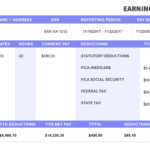In today’s world, businesses can use predictive analytics in various ways, from predicting customer behavior to forecasting the stock market. With the proper application of predictive analytics, companies can make more informed decisions and gain a competitive advantage. Here are six tips for using predictive analytics effectively.
Set the Framework
Businesses should learn how to implement a data observability framework when making decisions based on predictive analytics. A data observability framework is a complex set of resources and technologies that helps organizations monitor, measure, and manage their data.
By allowing for better visibility into businesses’ datasets and performance metrics, these frameworks provide complete visibility over the systems and processes involved. They enable users to observe discrepancies or faults within their data quickly and easily, ensuring they maintain the correct quality level at all times.
Businesses worldwide rely on data observability frameworks to maintain secure and reliable datasets, ensuring that the insights they provide are accurate and timely. With a properly implemented framework, employees will have more reliable data to analyze for decision-making purposes.
Understand Your Data
Understanding data is a crucial prerequisite to effectively using predictive analytics in decision-making. Without recognizing what information is needed and how to access it, solutions may lack accuracy or constitute a waste of resources.
Focusing on understanding the critical components of data before attempting predictive analytics can help businesses make well-informed decisions that aid in optimizing their operations. Not only does this enable more knowledgeable decision-making, but it also enhances the ability to identify patterns and recognize trends quickly.
By leveraging the insights gathered from intelligent data analysis and blending them with predictive analytics, enterprises can achieve a higher level of performance with less risk involved.
Utilize Automation
Predictive analytics requires analyzing large datasets, which can be time-consuming and tedious when done manually. That’s why it’s crucial to utilize automation whenever possible to streamline processes and ensure accuracy in results.
Automation can also reduce costs associated with manual analysis and speed up the process of obtaining results so businesses can make decisions quickly and efficiently.
Consider All Possibilities
When using predictive analytics to make decisions, it’s essential to consider all possible outcomes before making a decision. For example, if you are trying to decide whether or not to invest in a new project based on its predicted success rate, consider other factors, such as potential risks or rewards associated with each outcome, before making a final decision. Doing this will help you thoroughly consider all options before committing resources or time to any venture.
Analyze Trends Over Time
Data isn’t static; it changes over time depending on external factors such as economic conditions or customer behavior patterns. When using predictive analytics for decision-making purposes, it’s important to analyze trends over time to accurately assess the potential risks or rewards associated with making certain decisions at different points in time.
Analyzing trends over time will give you a better understanding of how certain decisions affect your business in the long run so that you can make informed choices accordingly.
Leverage Emerging Technologies
In addition to understanding your data and utilizing automation tools, leveraging emerging technologies such as artificial intelligence (AI) and machine learning can provide valuable insights into customer behavior patterns or market trends that would otherwise not be readily available through traditional methods alone.
By leveraging these technologies, businesses can gain a deeper understanding of their customer’s needs and preferences, which they can use to inform their decision-making processes more effectively.
Final Thoughts
Predictive analytics is invaluable for helping businesses make better decisions by providing accurate forecasts based on past performance indicators, current market trends, and customer behavior patterns. By following these tips—from learning how to implement a data observability framework to leveraging technology—businesses can take full advantage of this powerful technology for effective decision-making!








